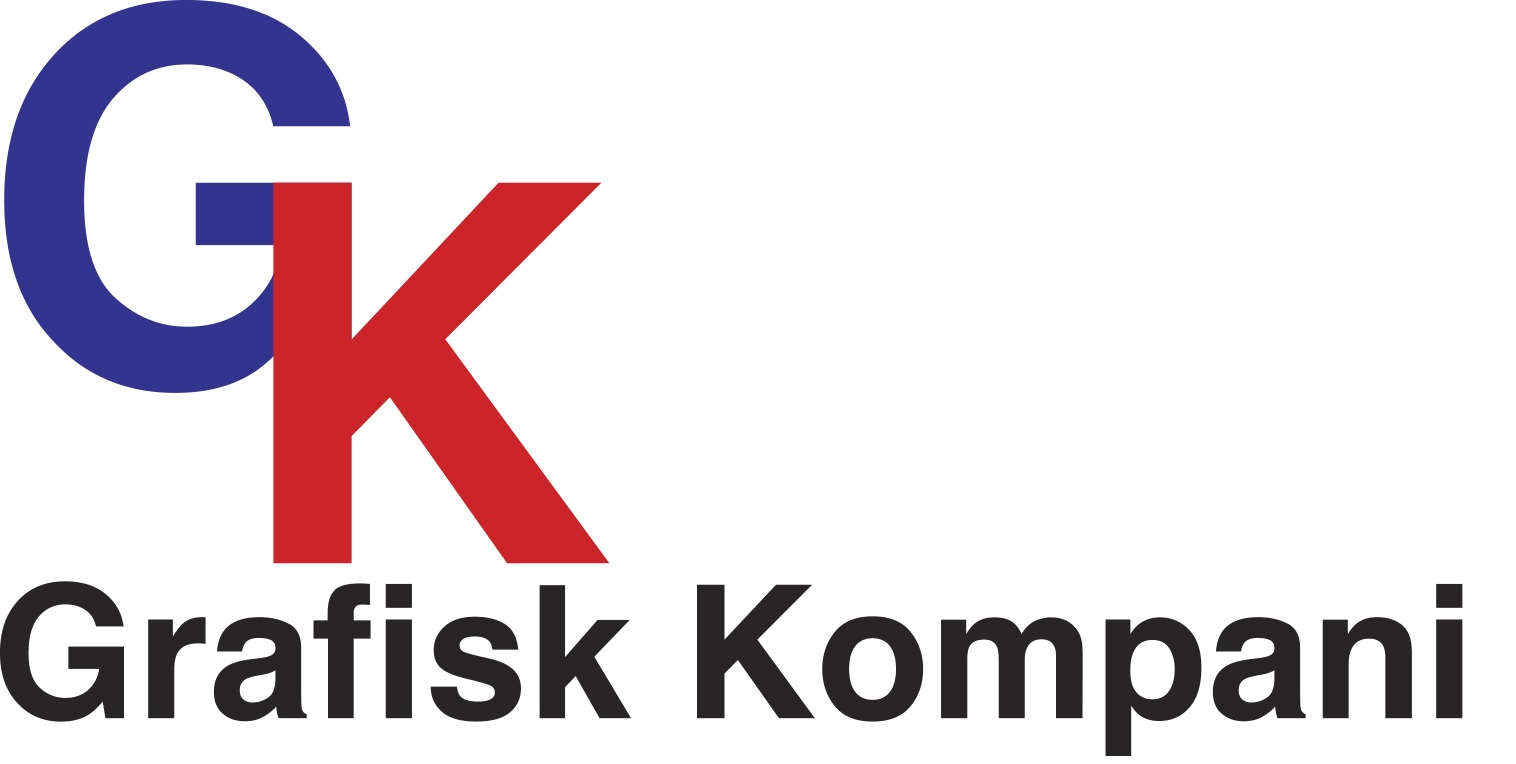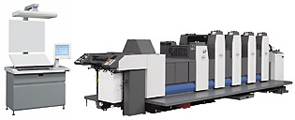
RYOBI MHI A3+ 520 GX
The RYOBI 520GX series is the top-of-the-line among the RYOBI 520 series, which boasts over 10,000 units sold worldwide. Generously equipped with high-end technologies, these presses can be used flexibly for a wide range of printing jobs.
- Specifications
- Advanced Automatic Systems Enhance Efficiency
- Creating the Ideal Workflow for Total Management of Production and Quality
- Reliable Mechanisms for High-Speed, High-Quality Printing
- Flexibility to Handle a Wide Range of Jobs
- Fifth and Sixth Color Printing and an In-Line Coating System Add Value
- Fully Automatic Convertible Perfecting Device Boosts Productivity
- LED-UV Printing System
Advanced Automatic Systems Enhance Efficiency
RYOBI PCS-H Printing Control System

Almost the entire operation flow from make-ready through printing can be centrally controlled using the touch panel of the RYOBI PCS-H Printing Control System, greatly shortening make-ready time for changing the paper, cleaning, registration adjustment, color tone adjustment, dampening volume adjustment, and other tasks when switching jobs. The result is superb operating efficiency for a diverse range of small-lot printing.
RYOBI Semiautomatic Plate Changer «Semi-RPC»

The RYOBI Semi-RPC allows plates to be changed quickly and accurately. The operator merely sets the plate on the positioning pins and presses the button. A plate bending device is unnecessary, as there is no need to bend the plate’s leading or tail edge.
The Various Automatic Cleaning Devices
Automatic blanket cleaning device, Automatic ink roller cleaning device
Pull Side Guide and Impression Pressure Preset Systems
Simply inputting the paper size and thickness via the RYOBI PCS-H touch panel display automatically sets the impression pressure and pull side guide to the optimal position. The impression pressure preset system includes a program-controlled impression cylinder cleaning function as standard.
Creating the Ideal Workflow for Total Management of Production and Quality
Image Area Calculating Software
[Ink Volume Setter/Ink Volume Setter-CIP4 (PPF)] (option)
RYOBI Ink Volume Setter uses PostScript data created on Macintosh computers to calculate the image area ratio for each ink fountain key on a RYOBI printing press, while RYOBI Ink Volume Setter-CIP4 (PPF) uses CIP3/CIP4 (PPF) files created with CIP3/CIP4 (PPF)-compatible software on a PostScript RIP. The calculated data is loaded via a 3.5-inch floppy disk or through a network into a RYOBI Printing Control System connected to a RYOBI printing press. The system then converts the data into the opening degree of each ink fountain key.
RYOBI Program Inking
RYOBI Program Inking automatically sets the conversion curve for each color according to the image area ratio data calculated at prepress. The ink settings, fountain roller speed, and number of contacts by the ink ductor roller are all controlled based on the conversion curves to assure the optimum ink volume. The target printing density can be quickly achieved, significantly shortening the time required for color matching.
Printing Density Control System (option)
RYOBI PDS-E SpectroJet

The RYOBI PDS-E SpectroJet measures the color bar of the printed sheet using special sensors in a spectrophotometer. Values needed to correct color densities to match those of the OK sheet are calculated and provided as feedback to the RYOBI Printing Control System which, in turn, makes appropriate adjustments in the openings of the ink fountain keys.
MIS Connection Software (for CIP4-JDF) (option)
MIS connection software for CIP4-JDF enables real-time exchange using the CIP4-JDF data format for sharing job direction data and production data between the MIS and printing control system. RYOBI MIS connection software and CIP4-JDF-compatible digital workflow streamline printing company operations by improving productivity and integrating the workflow from sales to production and management.
Management System for Printing Presses [RYOBI Print Job Manager] (option)
The RYOBI Print Job Manager connects RYOBI printing presses in a network to perform centralized production schedule management by optimally assigning job data to each press. It also gathers real time information on operating status and automatically generates productivity assessment data for each press. The RYOBI Print Job Manager is a powerful support tool for printing companies who want to boost productivity.
Reliable Mechanisms for High-Speed, High-Quality Printing
Simple Cylinder Arrangement
The satellite type cylinder arrangement consists of a double diameter impression cylinder and double diameter and triple diameter transfer drums. A minimum number of gripper changes and the larger circumference cylinders means less paper curling, important when printing on thick paper.
RYOBI-matic Continuous Dampening System
The RYOBI-matic continuous dampening system assures a uniform dampening supply on the plate surface to reproduce sharp halftone dots, glossy solids and finely detailed text.
The «RYOBI-matic-D» Continuous Dampening System with Hickey Removing Function (option)
This dampening system substantially reduces hickeys on plates by adopting a drive mechanism for the water form roller that creates a rotational speed difference between the water form roller and plate cylinder.
Flexibility to Handle a Wide Range of Jobs
Suction Tape Feeder Board

The suction tape feeder board uses a suction belt to securely hold the paper and feed it forward. The feeder board can be quickly and easily set for a wide range of paper sizes and thicknesses.
Compatibility with Many Types of Paper
The 520GX series can print postcards as well as laterally fed envelopes.
Fifth and Sixth Color Printing and an In-Line Coating System Add Value
Fifth and Sixth Color Printing Enhance the Visual Effect of Printed Materials
Fifth- and sixth-color printing units can print custom colors and supplemental colors, including gold, silver, fluorescent and opalescent inks. They easily handle spot-color printing for logos or company names which use specialty inks. These units demonstrate their worth particularly in high-end printing jobs such as pamphlets or art books, which require a strong visual effect with greater detail.
Retractable Coating Unit Design

When the coating system is not being used, the entire coating cylinder and anilox roller can be easily slid upward at the touch of a button to prevent paper marking.
Infrared Dryer and UV Curing Unit
Aqueous coatings are dried by a system that combines heat from an infrared dryer with heated air knives and ambient air knives. The infrared dryer and air knives can be adjusted to provide optimum drying of inks and coatings, delivering ample drying capacity even during high-speed operation. A UV curing unit can be built into the press for applications such as printing jobs that demand quick drying times and glossy printing.
Inter-deck UV Curing Unit (option)

Featuring a cassette-type design, it can be flexibly mounted to suit the type of work, either over the transfer drum between the 2nd and 3rd or 4th and 5th units, or over the coating impression cylinder of the 524GX and 526GX, providing space-savings as there is no need to expand the press.
Fully Automatic Convertible Perfecting Device Boosts Productivity
Fully Automatic Convertible Perfecting Device
Switching between straight printing and perfecting can be performed remotely from the delivery side via the RYOBI PCS-H. The operator simply inputs the paper size and selects a printing mode from the touch panel display.

LED-UV Printing System
RYOBI has developed a new eco-friendly LED-UV printing system offering impressive energy savings and superior ease of use. This system not only greatly reduces energy consumption but also features a much longer lifespan than a conventional lamp type system. This next-generation system produces minimal heat and no ozone, making it very eco-friendly.
